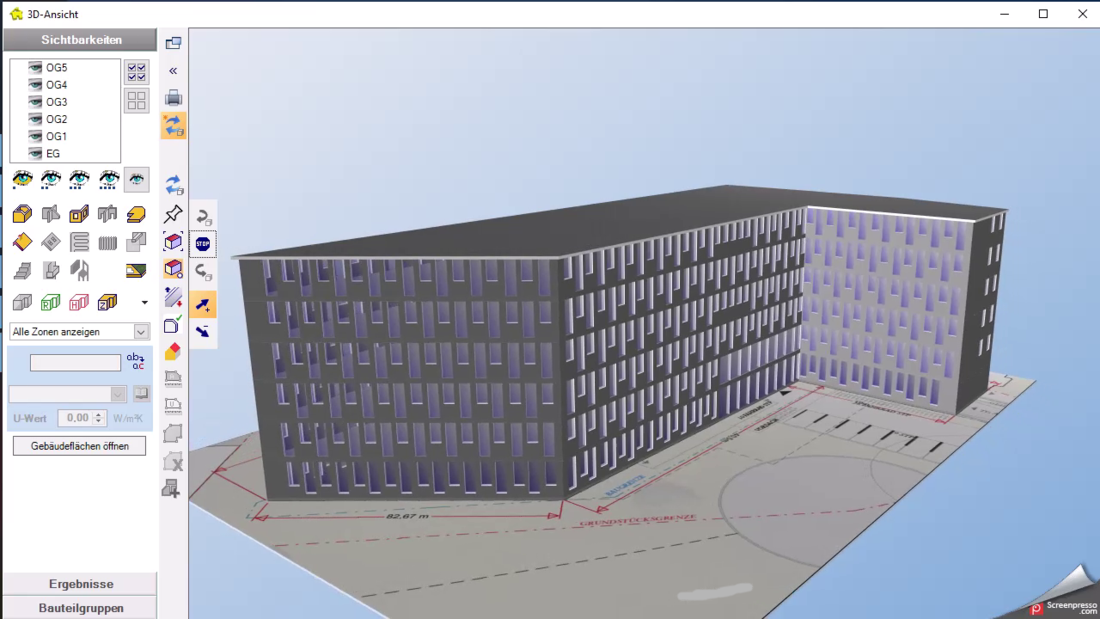Building simulation with Digital Twin
Energy-efficient office building of the future
For the new construction of a corporate headquarters in Düsseldorf, our sister company BDKplan was to develop, among other things, a regenerative and subsidisable energy concept. The subcontract for this feasibility study was awarded to goodmen energy.
The clients wanted the building to comply with the EU taxonomy guidelines for buildings. This means that the primary energy demand should be at least 10 percent below the requirements for an efficiency building 55 or meet the requirements for an efficiency building 40 (EG 40). In addition, the energy concept had to be designed in such a way that a cost-benefit-optimised saving of CO2 would result.
To determine the basics in advance, goodmen energy first carried out a site analysis taking into account the climatic conditions and a geothermal suitability test. Next, the team developed a digital twin - a digital building twin - based on the functional building description. This is a virtual image of the later physical building, which goodmen energy used to simulate the required building technology for the supply from various renewable energy sources. In addition, the planning office integrated supporting building physics measures to achieve the desired goals.
The Digital Building Twin provides new possibilities in building management - even before the design phase, opportunities can be developed and highlighted, which in turn can influence the design planning on the architect's side. This also means planning security for the building owner: costs for the supply from regenerative sources are taken into account right from the start - exploding costs due to necessary replanning are eliminated.
After considering all factors, goodmen energy recommended a combination of heat pumps, a geothermal probe field for heating and cooling, and a PV system to generate electricity for the system technology.
Details
The geothermal probes use the constant underground temperature of 10-12 degrees Celsius all year round. In summer, the probes provide low temperatures for environmentally friendly cooling; in winter, they serve as a heat source that is increased to the required level by means of a heat pump. Because of the low flow temperatures of the system technology, the heat pump works highly efficiently. In addition, it can supply heating and cooling energy at the same time.
A generous PV system on the roof of the building produces most of the electricity required by the system technology, which reduces the electricity purchase costs of the heat pump and the ventilation system. Surplus electricity can be fed into the public grid.
Direct marketing also makes another business model possible for the customer.
The combination of the technologies presented leads to a very low primary energy demand. With this recommendation, it is possible to fall 46 % below the demanding Efficient Building 40 standard in terms of primary energy. By using geothermal and solar energy, a high degree of self-sufficiency is achieved. The remaining energy consumption can also be obtained regeneratively from the electricity grid. Thus, the proposed concept serves as a model for energy-efficient and environmentally friendly office buildings.
With a DGNB certification, this new building is currently also eligible for funding.


